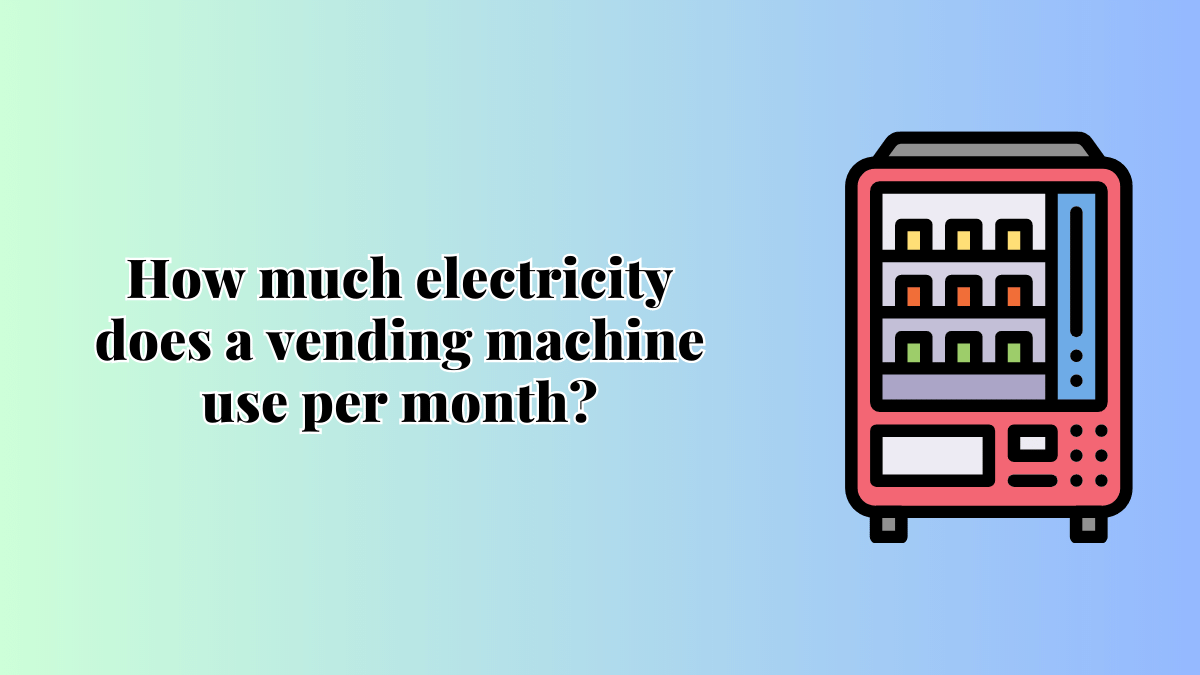Vending machines have become an integral part of our lives, offering quick snacks, drinks, and other essentials on-the-go. While they bring convenience, there’s often curiosity about the energy they consume. In this article, we’ll delve deep into the topic “How much electricity does a vending machine use per month?” and provide valuable insights based on expertise and credible sources.
Electricity Does a Vending Machine Use per Month?
Vending machines are known for their efficiency, but the amount of electricity they use varies depending on factors such as the machine type, size, location, and usage patterns. On average, a standard vending machine consumes about 50-200 kWh per month.
Factors Affecting Vending Machine Electricity Consumption
The electricity usage of vending machines can be influenced by several key factors:
- Machine Type and Size: Different vending machine types, such as snack, beverage, or combination machines, have varying energy requirements. Additionally, larger machines with more features may consume more electricity.
- Location: Vending machines in high-traffic areas might need to work harder to maintain optimal temperatures, potentially leading to higher electricity consumption.
- Operating Hours: Vending machines that operate 24/7 will naturally consume more energy compared to those with limited operating hours.
- Climate and Temperature: In hot climates, vending machines need more energy to keep their contents cool.
- Energy Efficiency Features: Some modern vending machines are equipped with energy-saving features, which can reduce electricity consumption.
Average Monthly Electricity Consumption of Different Vending Machine Types
When it comes to specific vending machine types, here’s an overview of their average monthly electricity consumption:
| Vending Machine Type | Average Monthly Electricity Consumption (kWh) |
|---|---|
| Snack Machine | 50-100 |
| Beverage Machine | 100-150 |
| Combo Machine | 150-200 |
Energy-Saving Tips for Vending Machines
If you’re a vending machine owner or operator looking to reduce electricity costs, consider these energy-saving tips:
- Upgrade to Energy-Efficient Machines: Consider investing in new vending machines with energy-saving features, such as LED lighting and advanced cooling systems.
- Optimize Machine Placement: Place vending machines in well-ventilated, temperature-controlled areas to reduce the workload on cooling systems.
- Set Energy-Saving Modes: Many modern vending machines come with energy-saving modes that can be programmed to activate during off-peak hours.
- Regular Maintenance: Keep the vending machines clean and well-maintained, as dirt and dust can impact energy efficiency.
- Consider Solar Power: If feasible, explore the option of powering vending machines with solar energy to reduce reliance on the grid.
FAQs
Q: Do vending machines consume more electricity in certain locations?
A: Yes, vending machines in hot and humid climates tend to consume more electricity due to the increased workload on cooling systems.
Q: Can I calculate the electricity cost of my vending machine?
A: Absolutely! To calculate the electricity cost, multiply the kWh consumption by your electricity rate per kWh.
Q: Are vending machines with energy-saving features more expensive?
A: While energy-efficient vending machines may have a higher upfront cost, the long-term energy savings often make them a worthwhile investment.
Q: Do vending machines consume electricity when not in use?
A: Yes, most vending machines have standby modes that use minimal electricity even when not actively vending.
Q: Can I retrofit my old vending machines to be more energy-efficient?
A: In some cases, retrofitting older machines with energy-efficient components is possible, but it’s essential to consult with a professional technician.
Q: Are there any regulations on vending machine energy usage?
A: Some regions may have energy efficiency regulations for vending machines, so it’s essential to stay informed and comply with local laws.
Conclusion
Vending machines play a vital role in our daily lives, and understanding their electricity consumption is crucial for both operators and consumers. By following energy-saving practices and investing in modern, energy-efficient machines, we can contribute to a greener, more sustainable future while enjoying the convenience they offer.




